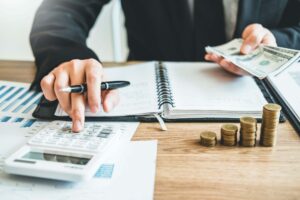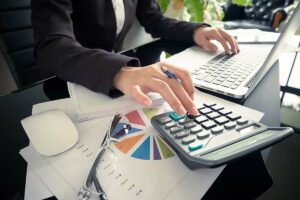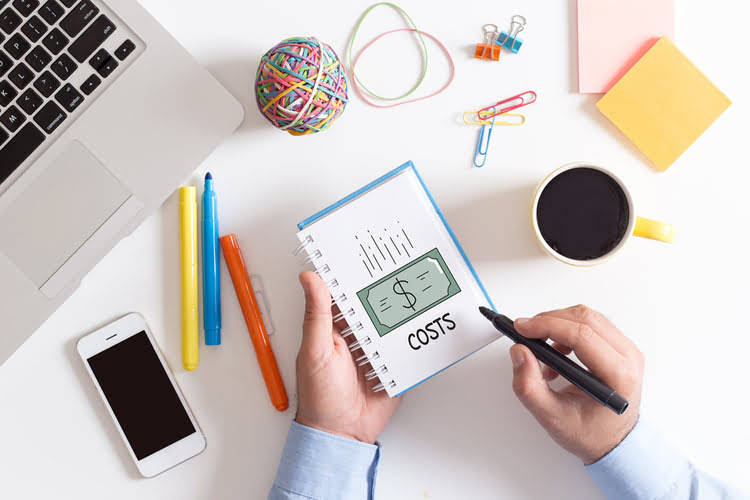This account may or may not be lumped together with the above account, Current Debt. While they may seem similar, the current portion of long-term debt is specifically the portion due within this year of a piece of debt that has a maturity of more than one year. For example, if a company takes on a bank loan to be paid off in 5-years, this account will include the portion of that loan due in the next what is the last and most important step of creating a balance sheet? year. This line item includes all of the company’s intangible fixed assets, which may or may not be identifiable.
- For instance, you might build one forecast where revenue is 10% higher than expected and one where it’s 10% lower.
- This account includes the total amount of long-term debt (excluding the current portion, if that account is present under current liabilities).
- Shareholder or owner equity is determined by any stock (common, preferred, or treasury), reserves, and retained earnings your company has.
- This asset section is broken into current assets and non-current assets, and each of these categories is broken into more specific accounts.
How to Read and Understand an Income Statement
You may have omitted or duplicated assets, liabilities, or equity, or miscalculated your totals. If you’re looking to sell your business, a balance sheet is crucial for potential buyers. This document helps to ensure potential buyers that the company’s in good health — and gives them a comprehensive breakdown of all assets, liabilities, and equity in the business. For sole proprietorships or single-owner businesses, net equity is usually called “owner’s equity.” But what does it mean? If you have shareholders, the equity also belongs to them — whether your shareholders are public or private.
Other comprehensive income (OCI)
Experienced accountants can pretty much eyeball the statement and get a sense of the company’s financial position, but you shouldn’t try to hold yourself to that standard just yet. Small business accounting software gives Accounts Receivable Outsourcing you a real-time view of your balance sheet by updating it with every transaction you record. Liabilities are debts or financial obligations that a company owes to outside parties. Similar to assets, liabilities are classified as either current or non-current based on their due date. Explore how a well-organized balance sheet can help your business avoid accounting errors, uncover new cash flow opportunities and achieve greater financial success. Clean, consistent recordkeeping and regular checks ensure that you’re moving forward based on reality and give investors a reason to view you as reliable.
What Is OTH on Your Paycheck and What It Includes
For this reason, the balance sheet should be compared with the other statements and sheets from previous periods. At the very bottom of the balance sheet, you will see totals for assets and liabilities plus equity. Verifying that these numbers match allows you to confirm that the data in your balance sheet is correct.
- Consider if a person wants to create a budgeted balance sheet from March 1st to April 1st that person must mention this at the start.
- If depreciation expense is known, capital expenditure can be calculated and included as a cash outflow under cash flow from investing in the cash flow statement.
- Regardless of who prepares your balance sheet, accuracy is key because the balance sheet reflects your business’s financial health.
- The owner can use the percentage difference to forecast how much more they will make during the second quarter of the following year.
- You can also see how your company’s finances ebb and flow over time to identify trends and adjust strategies accordingly.
- Together with the income statement and the cash flow statement, it’s the foundation of your business’s financial statements.
- A real-time view is helpful because it helps you assess your business’s financial health.
Budget vs forecast: What’s the difference?
For starters, see our experts’ top picks for the best accounting software and follow our buyers guide. The assets in the balance sheet are divided into current and non-current assets separately, and then both are added under assets. The same steps need to be followed as steps are followed when preparing a balance sheet but keeping future earnings in mind. The accuracy of these, though, depends upon the accuracy of the modeling used to calculate the budgeted balance sheets.
- The owners’ share of your business balances out the rest of your finances.
- If you are well versed in Excel, then you can create formulas to calculate the totals for you, so that when you edit the numbers it updates automatically.
- The statement then deducts the cost of goods sold (COGS) to find gross profit.
- Liabilities are debts or financial obligations that a company owes to outside parties.
- Small business accounting software gives you a real-time view of your balance sheet by updating it with every transaction you record.
In corporate structures, equity consists of common stock and retained earnings. Your liabilities section lists all of your current and noncurrent liabilities. Once you list and recording transactions assign the values for each, you can add them together to get your total liabilities. Example liabilities include short and long-term debt and accounts payable.




